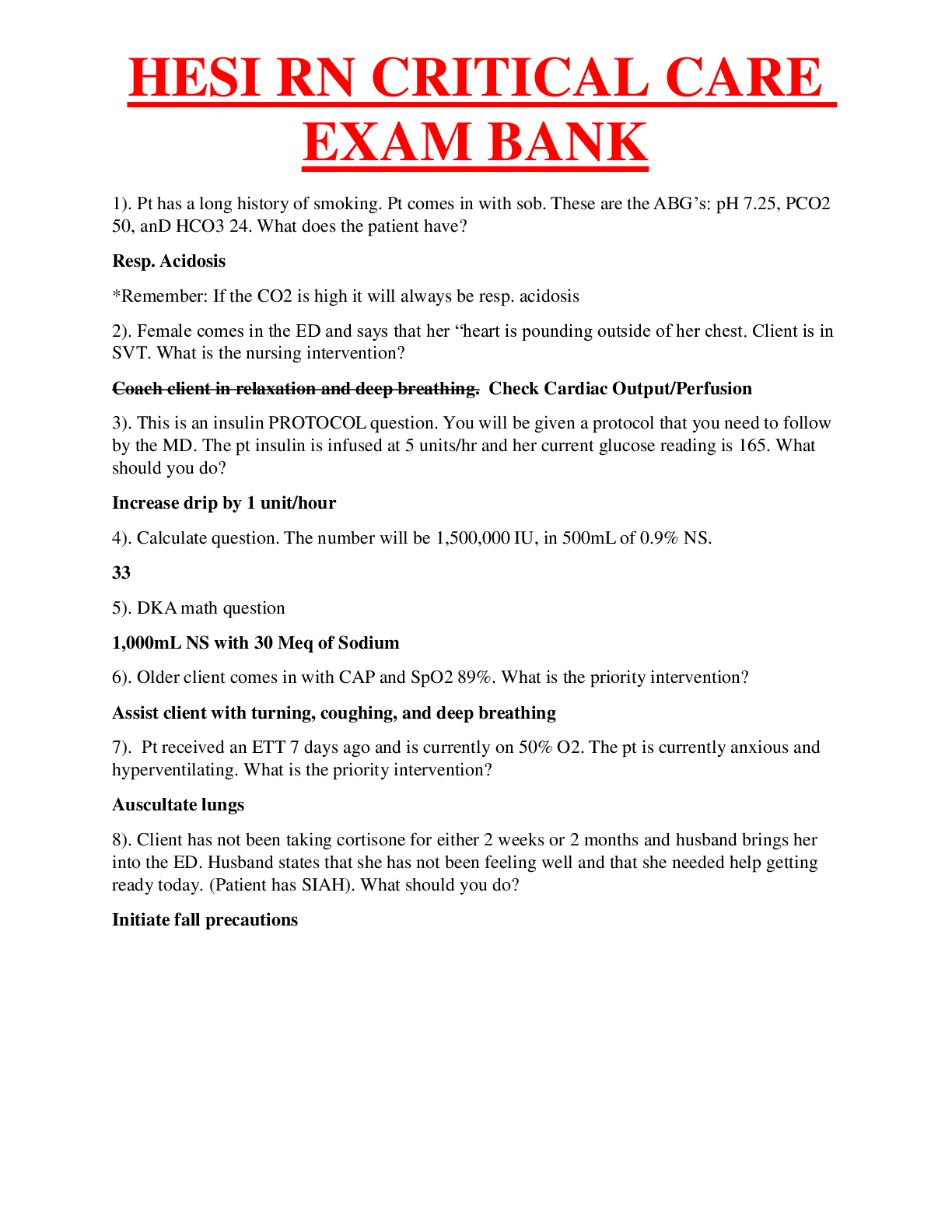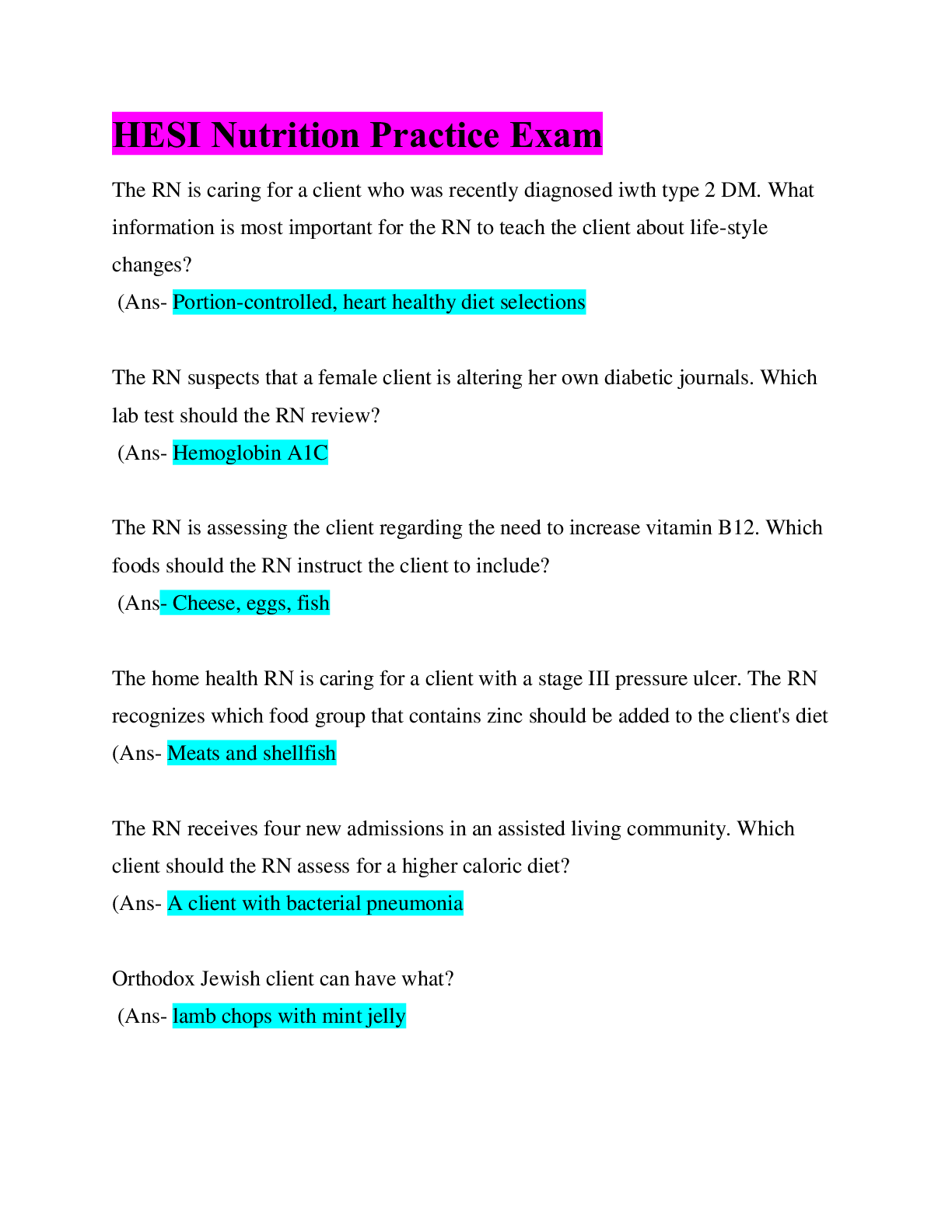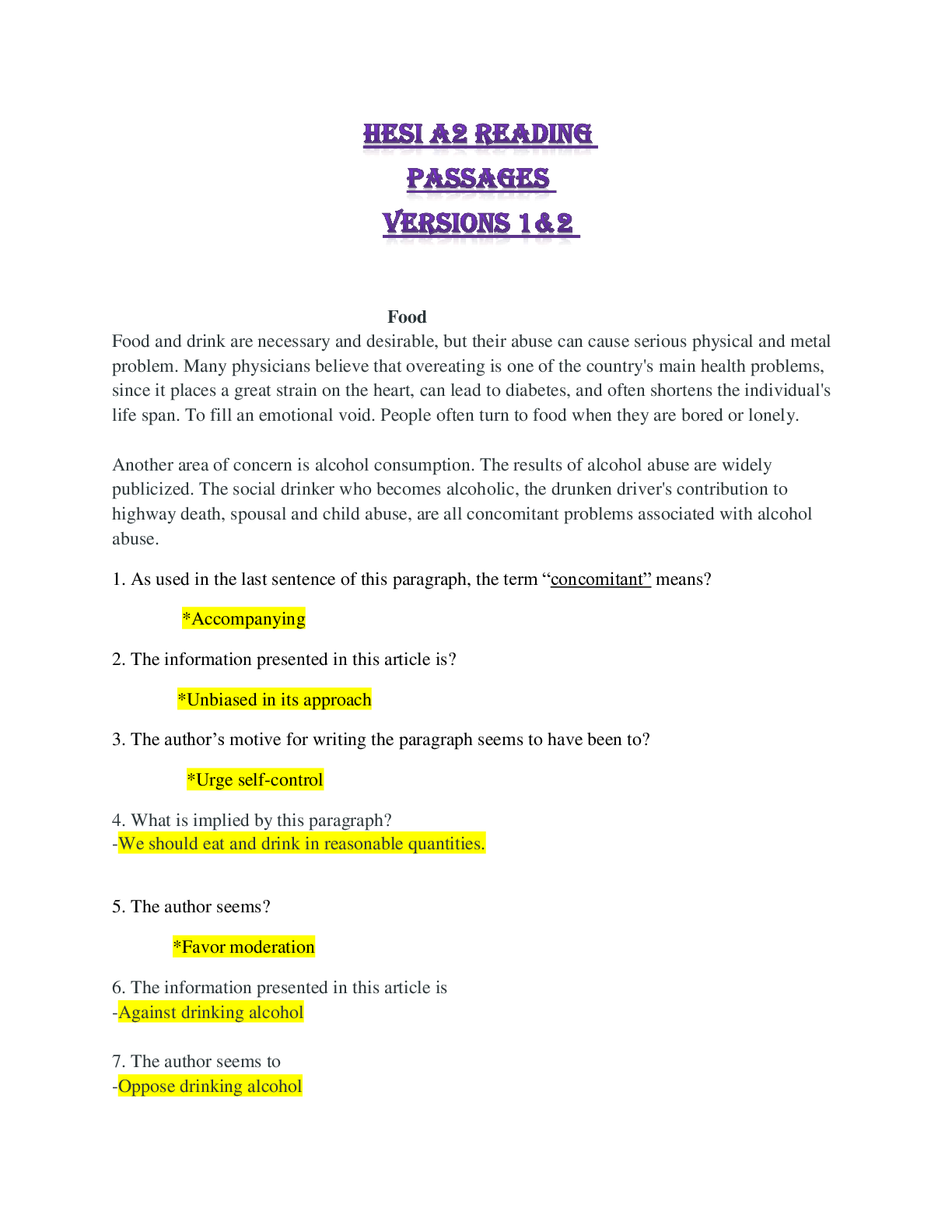*NURSING > HESI > LATEST 2022 HESI (nursing entrance exam) 100+ questions with answers. Graded A+. download to score h (All)
LATEST 2022 HESI (nursing entrance exam) 100+ questions with answers. Graded A+. download to score high
Document Content and Description Below
What are the most abundant elements of the human body? - Carbon, Hydrogen, Oxygen, Nitrogen 90% of the human body is composed of just four elements which are: - Carbon, Hydrogen, Oxygen, Nitrogen T... he smallest unit of an element that still retains the chemical and physical properties of the element is called: - Atom Subatomic particles are: - Protons (positive), Neutrons (neutral) and Electrons (negative) All matter is composed of basic substances called - Elements An atom that tells you how many protons an atom has is called: - Atomic Number The number of protons and neutrons is called: - Mass Number What is isotope? - The same element but different number in protons and neutrons-Mass Number (protons plus neutrons) minus Atomic Number (number of protons) equals the number of neutrons. What is radioactive isotope? - Atom whose nucleus undergoes degeneration and in the process gives off radiation What is a molecule? - Atoms bonded together to form a chemical unit What is a compound? - Combining different atoms What is ionic bond? - Ions with opposite charges attractWhat are ions? - Particle that is electrically charged because it has gained or lost one or more eletrons What is a covalent bonds? - Atoms sharing electrons instead of losing or gain them What is polar bond? - Bond created when electrons shared by adjacent atoms are shared unequally hydrophilic means - water-living Hydrophobic means - water-fearing What is electrolyte? - Substances that release ions when puts into water What is pH? - a measure of hydrogen ion concentration Anterior position - a body part is located towards the front (ventral) Posterior position - a body part is located toward the back. (dorsal) Superior position - a body part is located ABOVE another part or towards the head Anatomy - structure as well as its relationship with other structure Physiology - function of the body Proximal - a body part is CLOSER to a specific point of origin or attachment or closer to the trunk of the body Distal - a body part is FARTHER from the specific point of the origin or attachmentSuperficial -external - a body part is located near the surface Deep (internal) - a body part is located away from the surface A sagittal plane (median) cuts the body - right down the middle A frontal plane (coronal) is perpendicular (oppose) so it cuts the body - from ear to ear, from shoulder to shoulder across A transverse plane cuts the body - from the navel in half dividing the superior from the inferior A group of similar types of cells that performs a specific function is a(n): - Tissue What is the mechanism called which brings about an increasing change in the same direction? Example: child birth - positive feedback The relative consistency of the body's internal environment is called - hemostasis A group of similar types of cells that performs a specific function is a(n): - tissue A group of two or more types of tissues is a(n): - Organ Structures found WITHIN a cell that perform specific functions are: - Organelles Place the levels of organization in order from least complex to most complex - atom, molecule, organelle, cell, tissue, organ, organ system, organism The mitochondrion is an example of a(an) - OrganelleThe nose is _______ to the chin - Superior The muscles are _____ to the skin - Deep The sternum is anterior or ______ to the heart. - Ventral What is the scientific term for the mouth - Oral Identify the plane that would divide the body into left and right sides - Sagittal The plane that divides a body part into anterior and posterior sections is the ______ plane - Frontal (coronal) plane The cavity that contains the pleural and abdominopelvic cavities is the ______ cavity - Anterior (ventral) The cavity that contains the pericardial and pleural cavities is the ______ cavity. - Ventral and thoracic The vertebral canal and cranial cavity is located within the ______ cavity - Posterior, dorsal cavity The serous membrane that lines the thoracic cavity is the - visceral pleura The serous membrane covering the heart is the - Parietal pericardium [Show More]
Last updated: 2 years ago
Preview 1 out of 70 pages

Buy this document to get the full access instantly
Instant Download Access after purchase
Buy NowInstant download
We Accept:

Reviews( 0 )
$14.00
Can't find what you want? Try our AI powered Search
Document information
Connected school, study & course
About the document
Uploaded On
Mar 25, 2022
Number of pages
70
Written in
Seller

Reviews Received
Additional information
This document has been written for:
Uploaded
Mar 25, 2022
Downloads
0
Views
80













